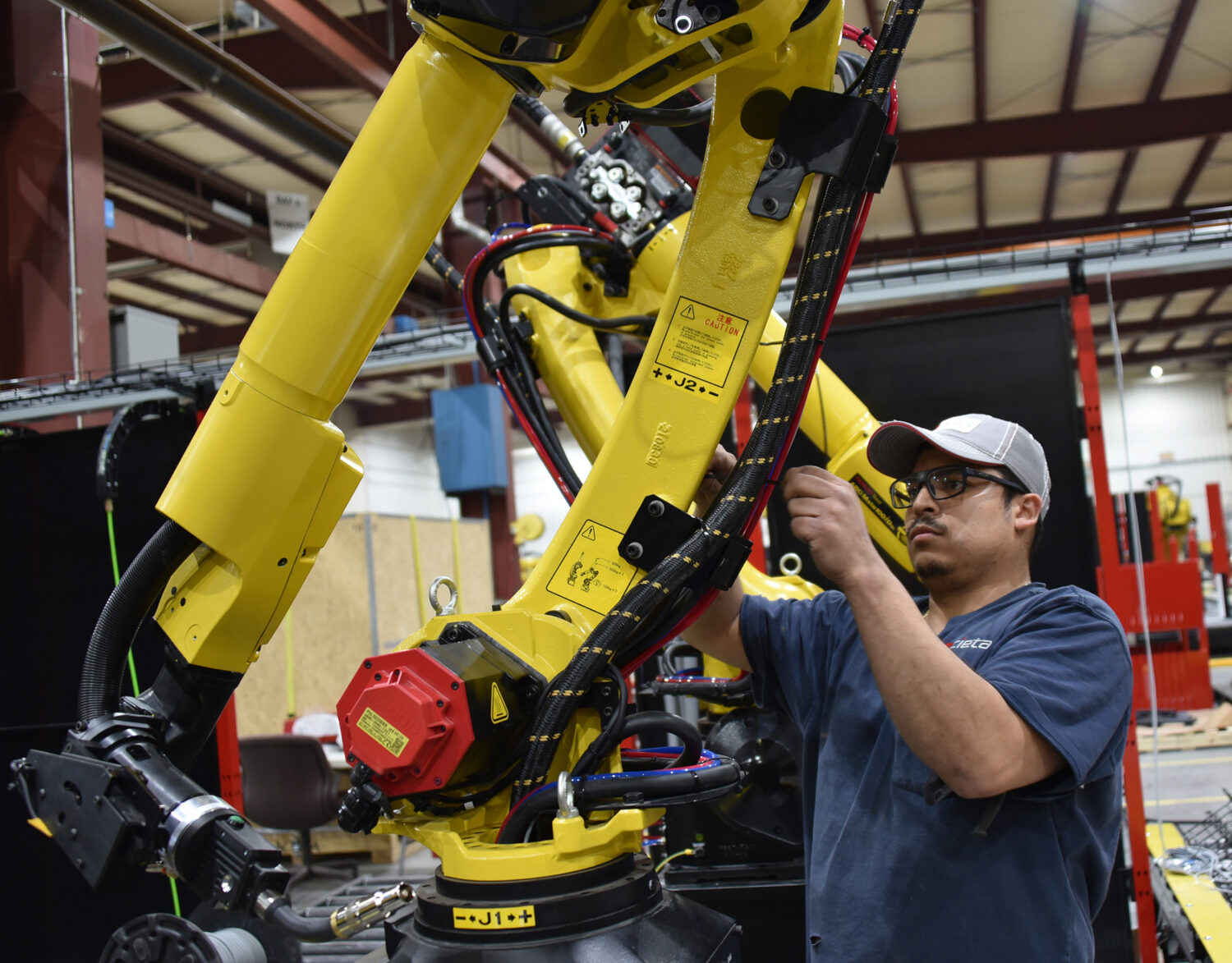
In the dynamic world of manufacturing, robotics stands at the forefront of innovation and efficiency, offering a compelling solution to the labor gap while enhancing the skills and satisfaction of the workforce. This positive synergy between humans and machines is reshaping the industry, creating opportunities for growth, innovation, and enhanced job satisfaction.
Addressing the Labor Gap with Innovation
Robotics steps in as a powerful ally in the manufacturing sector, addressing labor shortages by handling repetitive, physically demanding, or hazardous tasks. This shift allows employees to engage in more complex, strategic, and creative roles, leveraging their irreplaceable human insight and ingenuity.
Benefits of Robotics in Manufacturing
1. Boosting Productivity: Robots' ability to work tirelessly increases output and efficiency, helping businesses scale and meet consumer demands without proportional increases in labor costs.
2. Attracting and Retaining Talent: The integration of robotics signals a forward-thinking, innovative workplace that attracts a new generation of tech-savvy workers eager for careers in advanced technology.
3. Upskilling and Employee Growth: Robotics creates avenues for employee upskilling, offering training in operation, maintenance, and programming. This investment in employees' skills fosters a culture of continuous learning and adaptation.
4. Enhancing Job Satisfaction: Automating routine tasks elevates workplace safety and allows employees to focus on more rewarding aspects of their work, leading to higher job satisfaction and retention.
5. Navigating the Future: The shift towards robotics necessitates and nurtures a set of skills in high demand, ensuring the workforce remains adaptable and competitive in a rapidly evolving industry.
Looking Ahead
The integration of robotics into manufacturing is a clear path forward, offering a strategy to not only bridge the current labor gap but also to build a resilient, skilled, and satisfied workforce. This evolution towards a more collaborative relationship between people and machines marks a new era in manufacturing, characterized by growth, innovation, and a strong competitive edge.
In embracing robotics, the future of manufacturing shines bright, promising a workforce that is not only more efficient and productive but also more engaged and fulfilled in their roles. The journey ahead is one of partnership, where robotics and human talent together forge a new paradigm of excellence in manufacturing.